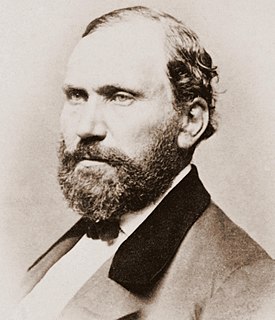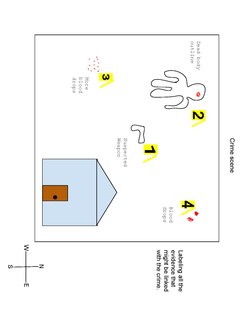Process
By engaging consistently updated computer software in the debt collection process, forensic corporate collection agencies are able to identify, retrieve, and protect electronic evidence of fraud (and other illegal means of avoiding debt) found on computers and use it as evidence in case of litigation. In order for a forensic collections agency to be used as a means of recovering a debt, the agency must be compliant with and knowledgeable of investigation basics, federal, state and local policies, standards, laws and legal processes. They must also have a working knowledge of the types of crimes and incidents in debt deception and fraud, the computing environment and types of evidence, as well as investigative tools, technical training, and use of forensic recovery equipment.
In order to effectively recover and locate debtors and get them to pay what they owe their client(s), forensic collections agents have become adept and conversant in evidence collection and management, managing the incident scene, the investigation of computer systems, disks, and file structures, extracting and preserving computer and electronic evidence, e-mail and Internet investigations, cell phone and PDA investigations, and other digital footprints debtors invariably leave behind.
Bankruptcy is a legal process through which people or other entities who cannot repay debts to creditors may seek relief from some or all of their debts. In most jurisdictions, bankruptcy is imposed by a court order, often initiated by the debtor.

In law, fraud is intentional deception to secure unfair or unlawful gain, or to deprive a victim of a legal right. Fraud can violate civil law or criminal law, or it may cause no loss of money, property, or legal right but still be an element of another civil or criminal wrong. The purpose of fraud may be monetary gain or other benefits, for example by obtaining a passport, travel document, or driver's license, or mortgage fraud, where the perpetrator may attempt to qualify for a mortgage by way of false statements.
Chapter 7 of Title 11 of the United States Code governs the process of liquidation under the bankruptcy laws of the United States, in contrast to Chapters 11 and 13, which govern the process of reorganization of a debtor. Chapter 7 is the most common form of bankruptcy in the United States.

A detective is an investigator, usually a member of a law enforcement agency. They often collect information to solve crimes by talking to witnesses and informants, collecting physical evidence, or searching records in databases. This leads them to arrest criminals and enable them to be convicted in court. A detective may work for the police or privately.
Cybercrime, or computer-oriented crime, is a crime that involves a computer and a network. The computer may have been used in the commission of a crime, or it may be the target. Cybercrime may threaten a person, company or a nation's security and financial health.

Accounts receivable are legally enforceable claims for payment held by a business for goods supplied or services rendered that customers have ordered but not paid for. These are generally in the form of invoices raised by a business and delivered to the customer for payment within an agreed time frame. Accounts receivable is shown in a balance sheet as an asset. It is one of a series of accounting transactions dealing with the billing of a customer for goods and services that the customer has ordered. These may be distinguished from notes receivable, which are debts created through formal legal instruments called promissory notes.

Computer forensics is a branch of digital forensic science pertaining to evidence found in computers and digital storage media. The goal of computer forensics is to examine digital media in a forensically sound manner with the aim of identifying, preserving, recovering, analyzing and presenting facts and opinions about the digital information.

Forensic accounting, forensic accountancy or financial forensics is the specialty practice area of accounting that investigates whether firms engage in financial reporting misconduct. Forensic accountants apply a range of skills and methods to determine whether there has been financial reporting misconduct.

A crime scene is any location that may be associated with a committed crime. Crime scenes contain physical evidence that is pertinent to a criminal investigation. This evidence is collected by crime scene investigators (CSIs) and law enforcement. The location of a crime scene can be the place where the crime took place or can be any area that contains evidence from the crime itself. Scenes are not only limited to a location, but can be any person, place, or object associated with the criminal behaviours that occurred.
Debt collection is the process of pursuing payments of debts owed by individuals or businesses. An organization that specializes in debt collection is known as a collection agency or debt collector. Most collection agencies operate as agents of creditors and collect debts for a fee or percentage of the total amount owed.
A fraudulent conveyance, or fraudulent transfer, is an attempt to avoid debt by transferring money to another person or company. It is generally a civil, not a criminal matter, meaning that one cannot go to jail for it, but in some jurisdictions there is potential for criminal prosecution. It is generally treated as a civil cause of action that arises in debtor/creditor relations, particularly with reference to insolvent debtors. The cause of action is typically brought by creditors or by bankruptcy trustees.
Digital evidence or electronic evidence is any probative information stored or transmitted in digital form that a party to a court case may use at trial. Before accepting digital evidence a court will determine if the evidence is relevant, whether it is authentic, if it is hearsay and whether a copy is acceptable or the original is required.

National Incident-Based Reporting System (NIBRS) is an incident-based reporting system used by law enforcement agencies in the United States for collecting and reporting data on crimes. Local, state and federal agencies generate NIBRS data from their records management systems. Data is collected on every incident and arrest in the Group A offense category. These Group A offenses are 49 offenses grouped in 23 crime categories. Specific facts about these offenses are gathered and reported in the NIBRS system. In addition to the Group A offenses, 10 Group B offenses are reported with only the arrest information.

Digital forensics is a branch of forensic science encompassing the recovery and investigation of material found in digital devices, often in relation to computer crime. The term digital forensics was originally used as a synonym for computer forensics but has expanded to cover investigation of all devices capable of storing digital data. With roots in the personal computing revolution of the late 1970s and early 1980s, the discipline evolved in a haphazard manner during the 1990s, and it was not until the early 21st century that national policies emerged.
Forensic accountants are experienced auditors, accountants, and investigators of legal and financial documents that are hired to look into possible suspicions of fraudulent activity within a company; or are hired by a company who may just want to prevent fraudulent activities from occurring. They also provide services in areas such as accounting, antitrust, damages, analysis, valuation, and general consulting. Forensic accountants have also been used in divorces, bankruptcy, insurance claims, personal injury claims, fraudulent claims, construction, royalty audits, and tracking terrorism by investigating financial records. Many forensic accountants work closely with law enforcement personnel and lawyers during investigations and often appear as expert witnesses during trials.

Mobile device forensics is a branch of digital forensics relating to recovery of digital evidence or data from a mobile device under forensically sound conditions. The phrase mobile device usually refers to mobile phones; however, it can also relate to any digital device that has both internal memory and communication ability, including PDA devices, GPS devices and tablet computers.

The digital forensic process is a recognized scientific and forensic process used in digital forensics investigations. Forensics researcher Eoghan Casey defines it as a number of steps from the original incident alert through to reporting of findings. The process is predominantly used in computer and mobile forensic investigations and consists of three steps: acquisition, analysis and reporting.
XRY is a digital forensics and mobile device forensics product by the Swedish company Micro Systemation used to analyze and recover information from mobile devices such as mobile phones, smartphones, GPS navigation tools and tablet computers. It consists of a hardware device with which to connect phones to a PC and software to extract the data.
Forensic Search is an emerging field of computer forensics. Forensic Search focuses on user created data such as email files, cell phone records, office documents, PDFs and other files that are easily interpreted by a person.
Gates Rubber Company v. Bando Chemical Industries, Ltd., et al. is a decision by the U.S. district court for the District of Colorado from May 1, 1996. It is to be considered a landmark decision in terms of expert witness court testimony in questions of electronic evidence and digital forensics.







